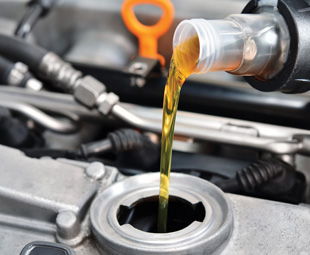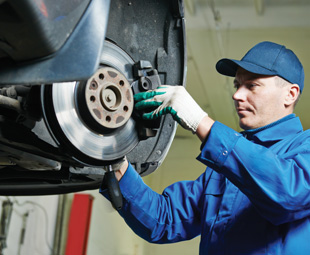Love and care from the inside out

As the rand continues to weaken, reducing day-to-day costs and transport expenses is becoming more important. THATO TINTE looks at vehicle maintenance essentials you can apply to the vehicles in your fleet or personal garage in equal measure
Many South Africans find themselves squeezing their budgets as best they can to get the most out of what they have – from reducing electricity usage, opting to purchase previously owned vehicles over new ones, to car pooling to ease rising fuel and transport costs.
Many are also hanging on to their vehicles for longer, extending replacement cycles by months, or even years. While this practice saves the expense of purchasing new vehicles, it does come with risks.
With age comes wear and tear. The risks to consider include the true condition of the vehicle and the associated running and maintenance costs. Older vehicles can be more expensive to maintain, sometimes unexpectedly, which increases their running costs.
 If buyers are not prepared for the unpredictable, yet inevitable, running costs, major problems can result. Proper vehicle maintenance is critical to extend the vehicle’s service life, as well as to ensure the safety of the driver and that of other road users.
If buyers are not prepared for the unpredictable, yet inevitable, running costs, major problems can result. Proper vehicle maintenance is critical to extend the vehicle’s service life, as well as to ensure the safety of the driver and that of other road users.
It is, therefore, important that we don’t skimp on the little things – which can quickly turn into major expenses if not taken care of – when looking for ways to cut our budgets.
Delaying services, maintenance, or repairs to your vehicles, or ignoring something as small as a rattle or flashing warning light, can do more harm than good. Driving with partially functional items can do serious damage to the bigger, much more expensive, components.
Yes, older vehicles can cost more to maintain, but with the right advice, guidance and care, one can get good value for money. The Kinsey Report, released in late 2015, highlighted the alarming and spiralling costs of replacement and spare parts – indicating the “knock-on effect” these hikes will have on overall costs of vehicle repairs.
How then do vehicle owners ensure that they save money while extending the lifespan of their investment? These are some of the essential “service and maintenance” items that motorists should plan for.
Checking various components:
 Changing the engine oil, oil filter and air filter regularly helps reduce the wear and tear of the engine. According to supplier, retailer and wholesaler of spare vehicle parts, AutoZone, “One of the simplest, most effective and inexpensive ways to help protect the life of your vehicle’s engine is to regularly change the oil and oil filter.”
Changing the engine oil, oil filter and air filter regularly helps reduce the wear and tear of the engine. According to supplier, retailer and wholesaler of spare vehicle parts, AutoZone, “One of the simplest, most effective and inexpensive ways to help protect the life of your vehicle’s engine is to regularly change the oil and oil filter.”
It’s important to use the correct grade of oil recommended by the manufacturer of your vehicle that is suited to the climate in which the vehicle operates. Change the oil at the specified intervals. Always check for leaks underneath your vehicle and have these repaired without delay.
Lighter grade oils reduce the load on the battery and starter motor allowing for a quicker start. They also reach engine lubrication areas more quickly than their more viscous counterparts – significantly reducing wear.
Regular inspection of your brake fluid is important. Low levels, or leaks, can lead to brake fade, loss of braking power, or complete failure of your braking system.
AutoZone advises checking your brake pads at every service interval and every six months. Once the thickness of the friction material is uneven or at two millimetres thick, wear on the brake pads is advanced and they need to be replaced.
You should replace fan belts when they start to crack or split.
 As age kicks in, it’s clear that every kilometre travelled will impact every component of your vehicle. MotorHappy – an aftermarket motoring plan service provider owned by the Imperial Group – suggests the following tips to help slow down the wear and tear process:
As age kicks in, it’s clear that every kilometre travelled will impact every component of your vehicle. MotorHappy – an aftermarket motoring plan service provider owned by the Imperial Group – suggests the following tips to help slow down the wear and tear process:
Go easy on the pedals:
Don’t continuously “ride” your brake and accelerator pedals. This will damage your vehicle’s suspension.
Avoid stop-start driving:
When possible, avoid frequent stop-start driving as this will increase wear and tear on the engine. Opt for routes with fewer stops – such as highways. This will also decrease fuel consumption.
Start the day slowly:
Instead of starting your engine and waiting until it has fully warmed up, or dashing off before it’s ready, MotorHappy advices that motorists should rather start the car and drive off slowly without putting too much pressure on any of the components.
Tyres:
 Keeping your vehicle’s tyres at manufacturer-recommended pressures ensures safe braking, reduces wear and tear and ensures good fuel consumption. Over- or under-inflated tyres cause imprecise handling and prematurely wear the tyre tread. MotorHappy recommends (where applicable) rotating a vehicle’s tyres every six months so that the treads can wear evenly.
Keeping your vehicle’s tyres at manufacturer-recommended pressures ensures safe braking, reduces wear and tear and ensures good fuel consumption. Over- or under-inflated tyres cause imprecise handling and prematurely wear the tyre tread. MotorHappy recommends (where applicable) rotating a vehicle’s tyres every six months so that the treads can wear evenly.
One should not forget the “miscellaneous” extras. These include items such as wiper blades and globes, which can become safety hazards if ignored.
Using worn wiper blades worsens visibility. Check for cracks, dust and wear and replace them annually. Globes should also be regularly checked.
Not everyone will afford to have pre-paid maintenance plans; however, those who do have disposable income should certainly make this a priority, as it will give great peace of mind in times of crisis.
Finally, all motorists should ensure regular maintenance and servicing of their vehicles to avoid sleepless nights when the costs of neglect begin to pile up.
Published by
Focus on Transport
focusmagsa




